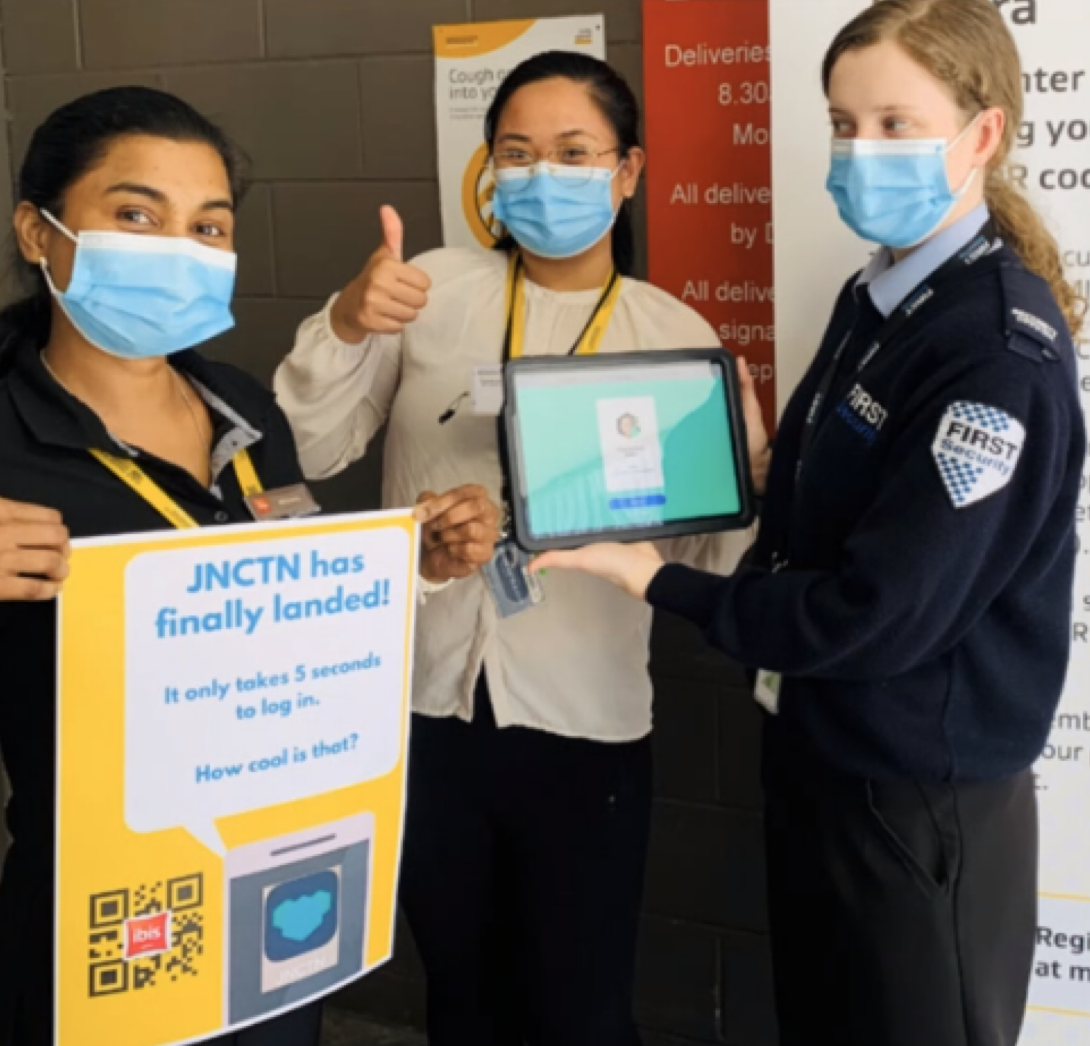New Zealand Managed Isolation and Quarantine
Leveraging JNCTN technology kept workers and communities safe during the Covid-19 pandemic
On behalf of the New Zealand Government, the Ministry of Business Innovation and Employment (MBIE) is responsible for the planning and operation of New Zealand’s Managed Isolation and Quarantine (MIQ) programme.
The Problem
In response to the outbreak of Covid-19, various measures were implemented by government agencies to help stem the flow of the virus into New Zealand. Managed Isolation and Quarantine Facilities (MIQFs) were established, and on arrival all travellers entering New Zealand spent time in one of the facilities.
14,000+ people from over 650 organisations were involved in managing and running the MIQFs. Protecting a workforce of this size and limiting the risk of possible transmission into the community was critical.
To achieve this, MBIE needed to ensure that all MIQ Border Workers operated within current government policies and compliance standards while working at MIQFs.
Workers reported that when they entered or exited a facility, the sign-in processes and manual handling of their ID documents and health status, were repetitive and time consuming.

The Solution
The JNCTN platform enabled the New Zealand Government to meet PCBU, Health and Safety, and operational compliance obligations for MIQF.
MIQF site security officers used JNCTN’s new contactless tools to significantly reduce the time required for ID and credential checks. The approval of a worker’s entry or exit was reduced from minutes to seconds.
By linking a worker’s profile to their employer, the need for staff to carry vaccination cards and additional photo identification for access was eliminated.
Creating location-specific business rules ensured that only compliant workers could sign-in to a specific facility. Activating a real-time command and control centre produced an accurate view of a worker’s compliance status. Having access to consented data clearly showed who was on location, and any exceptions and authorisations. It made audit reporting easier and more accurate.